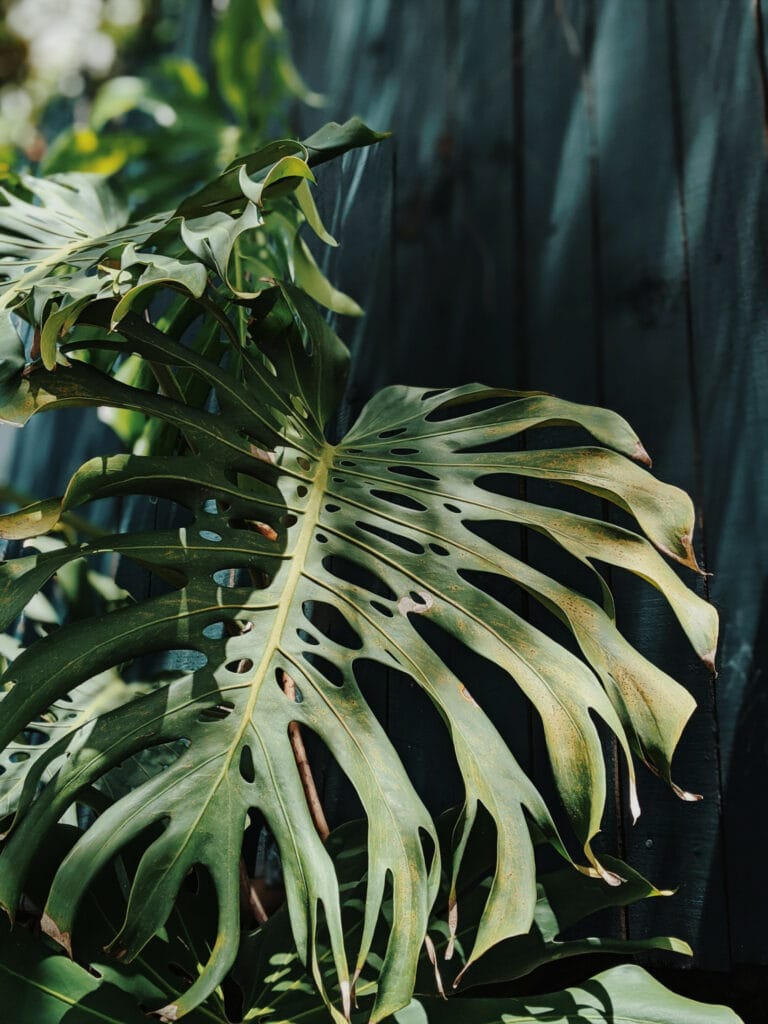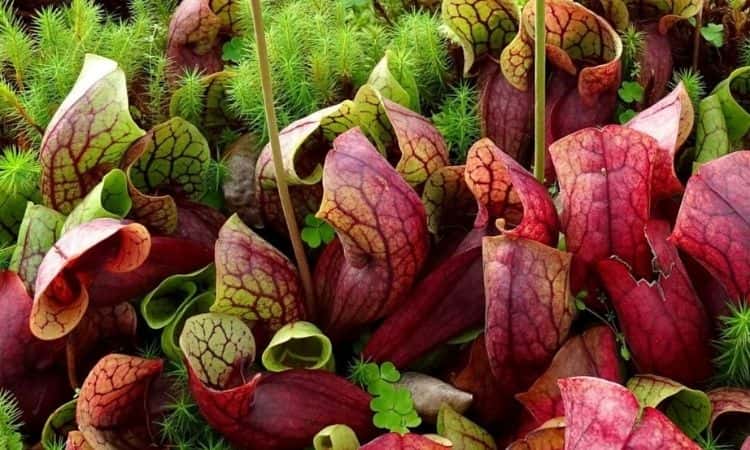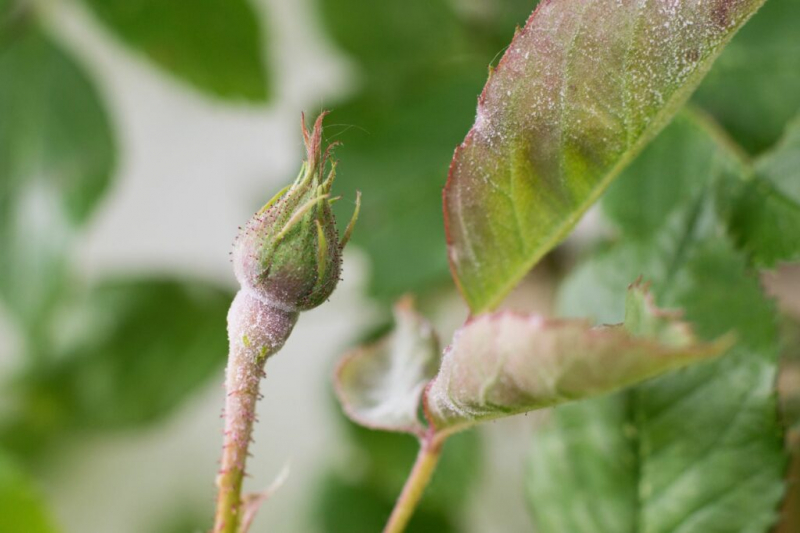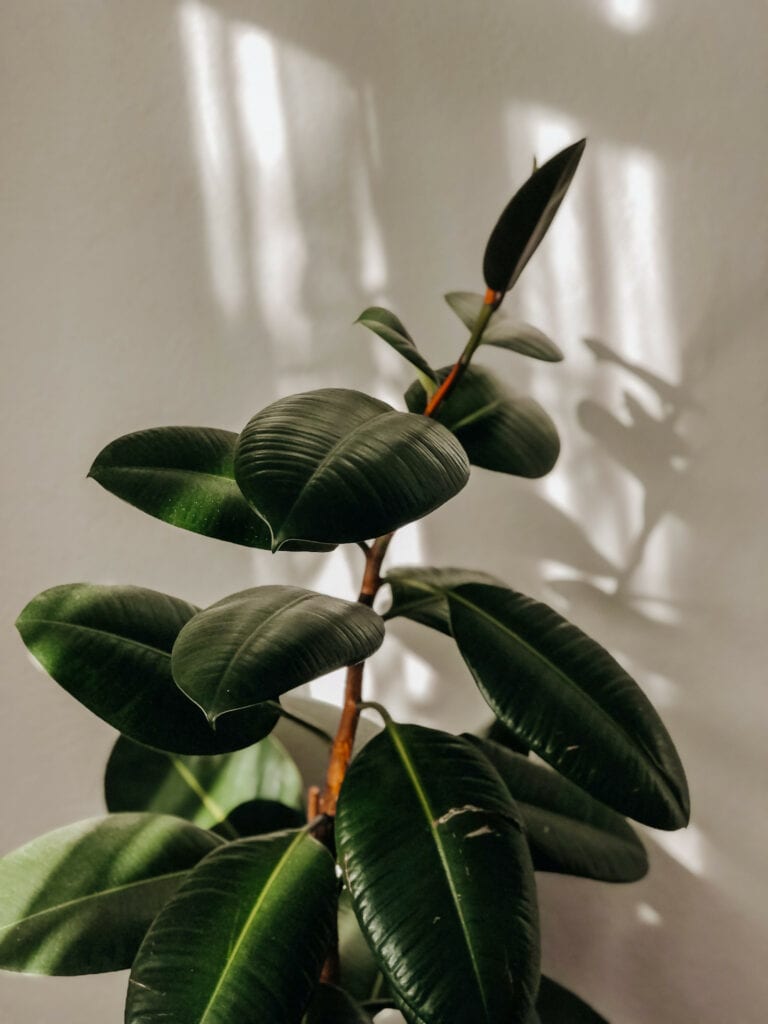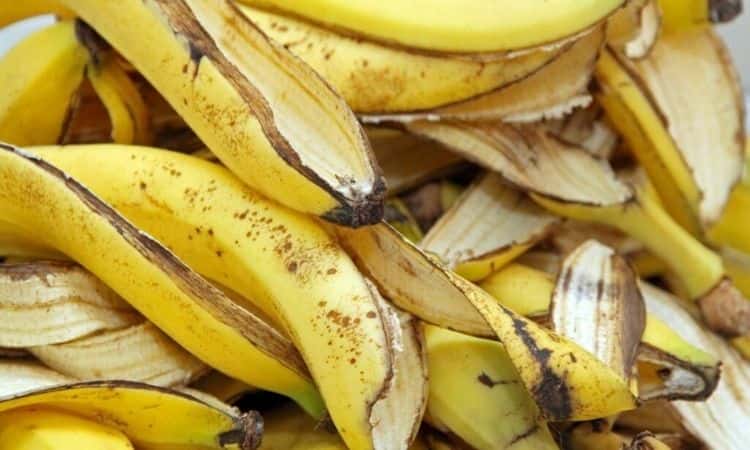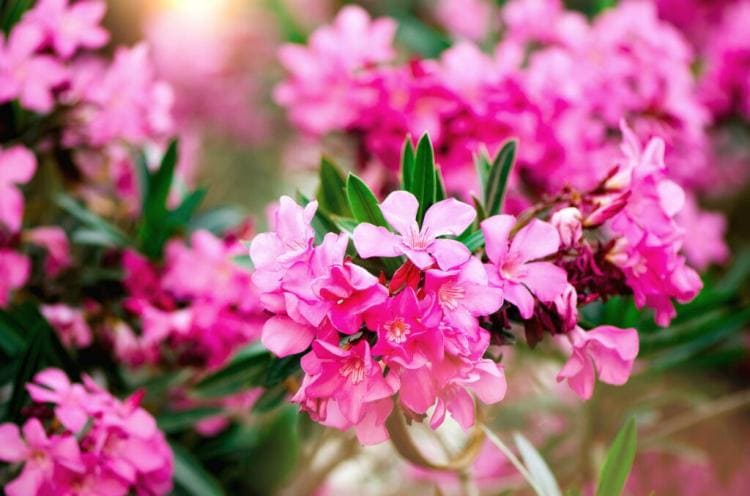Growing Spring Onions: Sowing, Care And Harvest Time
Growing spring onions: We present suitable varieties and give tips on sowing, care, and fertilization, right up to harvest.
The healthy spring onion ( Allium fistulosum ) should not be missing in any garden for a very simple reason: It is a very undemanding vegetable culture, hardly needs any maintenance and you can harvest fresh and tasty spring onions throughout the entire gardening season. The hardy plant can even be sown in autumn. When growing beans, peas, or carrots, the harvest can often be carried out as early as the end of July or August. The bed is usually empty afterward unless green manure is being made. These empty spaces are perfect for spring onions. Due to the growth lead, the first spring onion harvest can take place as early as spring.
Propagation of spring onions
Table of Contents
The spring onion is usually propagated from seeds. The time for sowing is very variable. Theoretically, however, it can take place from spring to autumn. From our point of view, however, the best time to sow is late summer or autumn. For a very early harvest next spring, the small seedlings are preferred. The best way to do this is to use plastic growing plates made up of many small pots.
The advantage of this is that each spring onion already grows in its own small pot, which prevents different plant roots from growing together. When the first beds have been harvested in autumn, the pre-grown plants can be planted there at a distance of 2.5 cm. For us, the cultivation in double rows has proven to be the best. For this, two rows are laid out with a distance of 5 cm; the distance to the next double row should then be between 30 and 40 cm. Of course, the spring onion does not necessarily have to be brought forward and can also be sown directly in autumn or spring:
- Germination: Optimal at 15 – 25 ° C in 3 to 14 days.
- Sowing: Lay out the seeds in a row and cover them lightly (0.5 cm) with soil, use enough seeds to later isolate the plants 2.5 cm apart in the row.
- Watering: Water carefully when it is dry and make sure that the seeds are not washed away.
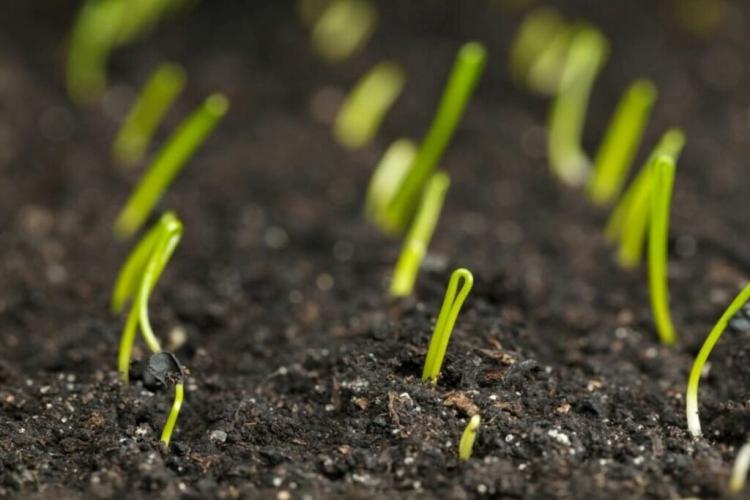
In addition to generative reproduction, i.e. cultivation from seeds, there is also vegetative reproduction. Here, a new and independent plant is formed from an existing plant part. This is possible with the spring onion because it forms a clump as it grows. An eyrie is closely spaced plant shoots that can be divided. With the spring onion, a section of a clump should consist of at least three shots. This ensures reliable growth. So if you have a neighbor or an acquaintance with an existing spring onion culture, you can save yourself the need for seedlings.
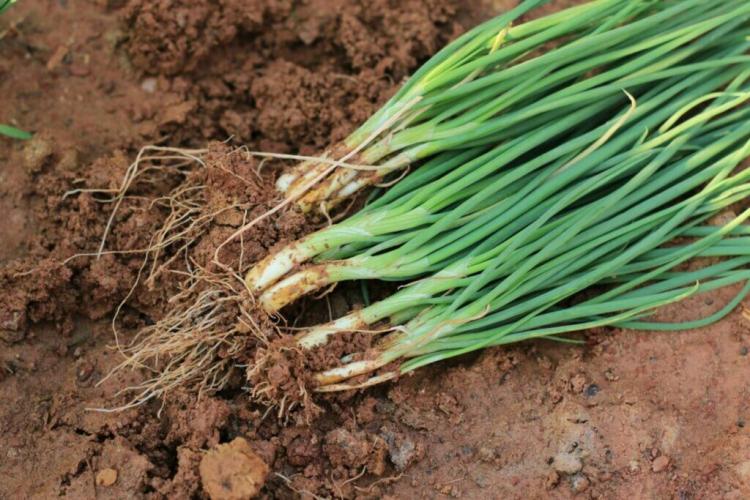
Spring onion varieties: New, tried and tested, and robust
As with any vegetable, there are many different types of spring onion. However, fake spring onions are also represented among the varieties on offer. For example, the De Vaugirard variety is sold as spring onion, although it is actually a normal onion ( Allium cepa ). Real spring onions ( Allium fistulosum ) do not form round onions; if in doubt, it is always helpful to take a look at the Latin name.
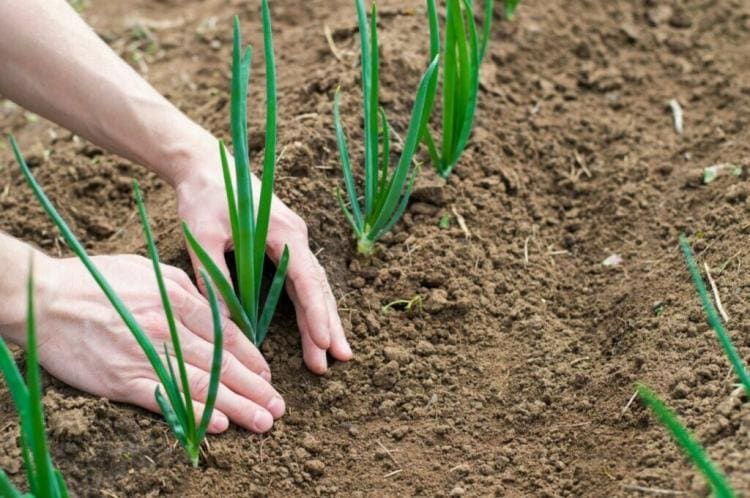
Common spring onions are Freddy, Tonda, Musona, Pal, Ishikura, Negaro, and Totem (F1). There are no major differences in appearance between the varieties and they are normal spring onions with a white shaft and green leaves. One variety that should be mentioned separately is Da Mazzi Bunching. During the breeding process, great importance was attached to the longest possible shaft.
Since the shaft is very mild in taste, the variety is suitable for dishes where only a mild onion taste is desired. In our opinion, the Feast variety also has special properties. It is said to be more heat tolerant than other varieties. Therefore, the variety is particularly suitable for summer cultivation or gardens with poor irrigation options.
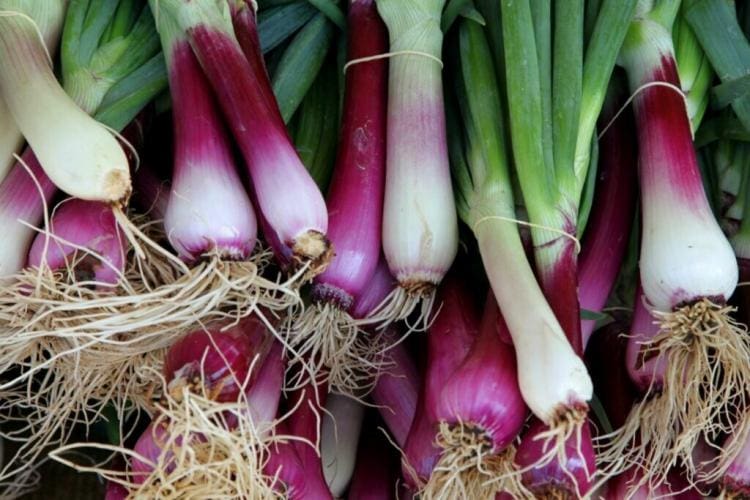
For health-conscious hobby gardeners, we recommend the Red Toga and Red from Florence varieties. In both varieties, the shaft is red and not white. The red color is caused by anthocyanins and these should not be missing in any healthy diet. The healthy dye traps free radicals in our bodies. In addition, the red spring onions are of course a real eye-catcher.
Location for spring onions
No matter what time of year the spring onions are sown, the location should always be right. The spring onion needs full sun for successful cultivation. The penumbra is also suitable, but less aromatic substances are formed there. In addition to the supply of light, the nature of the earth is also important. It should be loose, sandy, and well-drained. Waterlogging can easily form on heavy soils and they don’t like spring onions at all. In an optimal location and at temperatures around 18 ° C, the spring onion develops particularly well. You can then expect the first harvest three months after sowing.
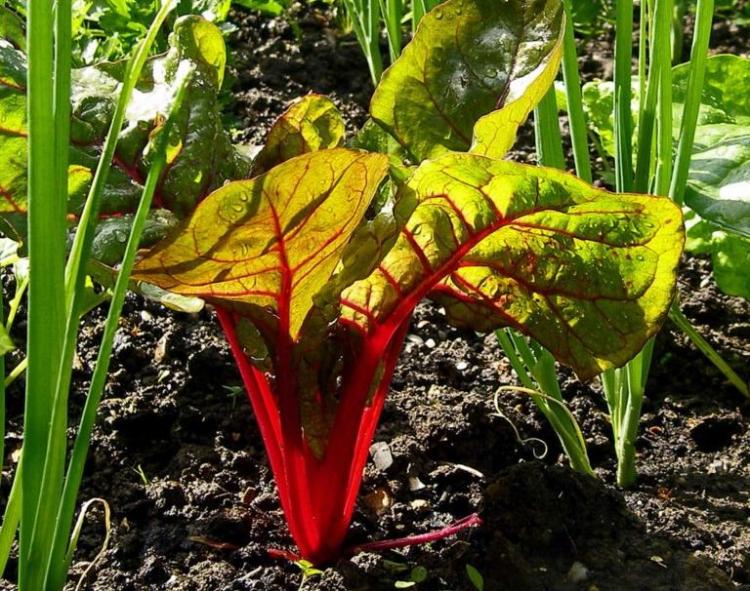
Because the spring onion grows slowly in the beginning, the space around it can be used for a mixed culture. Plants that grow quickly and are harvested early are suitable for this. Radishes, spinach, or other small and fast-growing vegetables are perfect for this. The mixed culture also ensures that the initially bare soil is protected from soil erosion.
Growing spring onions on the balcony is also no problem. If the spring onions are placed in a 10-liter pot with the permeable substrate, they will grow by themselves. Of course, you can also plant the spring onions on a raised bed, but the raised bed should be available for more demanding plants (such as broccoli).
Watering and fertilizing
As promised at the beginning, the spring onion does not require very much care. For this reason, watering does not have to be frequent. Watering is only allowed during prolonged dry periods. But there should never be waterlogging!
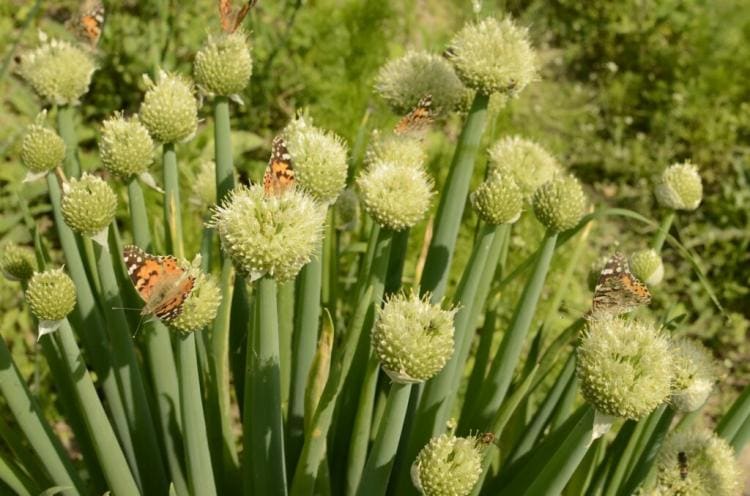
The spring onion doesn’t need a lot of fertilizer. Too much fertilizer can even cause a bland taste. It is best to only fertilize onions organically. But be careful: Avoid fresh compost or apply it sometime before sowing, because fresh compost promotes infestation by the onion fly. With a primarily organic fertilizer, the nutrients are only released slowly, and overfertilizing the spring onions is practically impossible.
Spring onion harvest time
If the weather is good, you can harvest your first juicy spring onions as early as April after sowing in early autumn. If you have chosen a different sowing date, you should wait until the bulbs have reached a height of 25 cm. Now you have to decide whether you want to harvest the whole spring onion or just cut off part of it. When the harvest is complete, the plants are carefully pulled out of the ground and then washed thoroughly. After harvesting, the spring onions can be stored in the refrigerator for up to a week. However, we recommend consuming it as soon as possible, as the spring onion simply tastes best fresh.

In addition to harvesting the whole onion, you can also harvest the same plant over several years. It is then a perennial permanent culture. Here you just cut off the leaves and part of the shaft. Do not cut too deeply and leave at least 5 cm from the shaft. The plant can then regenerate again and again and new leaves grow back. It must be noted, however, that the cut spring onions do not keep that long. They dry out faster than a full spring onion through the cut.
Spring onion pests
Of course, the spring onion (like any other vegetable) can also be attacked by pests. As a rule, however, this rarely happens. Most varieties are resistant to many fungal pathogens. Only downy mildew can cause problems in damp weather and heavy soil. Unfortunately, there is often no rescue for infected onions. Onion flies can also eat small holes in the onion. In contrast, only a close-meshed culture protection net can help, which means that the flies can no longer get to the plants. Most of the time, the spring onions get by without any pesticide measures.
You might so like:

